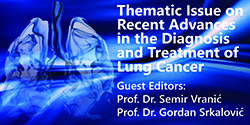Ultrasound Evaluation of Radial Nerve Palsy Associated with Humeral Shaft Fractures to Guide Operative Versus Non-Operative Treatment
DOI:
https://doi.org/10.5644/ama2006-124.257Keywords:
Humerus Fracture, Ultrasound, Radial Nerve, InjuryAbstract
Objective. To determine the effectiveness of diagnostic ultrasound (US) at evaluating the condition of the radial nerve in the setting of humeral shaft fractures.
Materials and Methods. An observational study was performed of 18 patients with radial nerve palsy associated with humeral shaft fractures who underwent US examination to assess the condition of the radial nerve.
Results. Six patients with humeral shaft fractures treated nonoperatively in a functional brace had US findings consistent with contusion or stretch radial nerve injury. Twelve patients ultimately underwent surgery either because US showed an entrapped or lacerated radial nerve, or for other operative indications. There was a 92% concordance (11/12 patients) between US and intraoperative findings with regards to the condition and location of the radial nerve, with the remaining case being complicated by delayed surgical treatment secondary to patient factors.
Conclusion. Our study demonstrates that US is an effective diagnostic tool in evaluating radial nerve injuries in the setting of humeral shaft fractures and can aid in clinical decision making by differentiating between patients with nerve laceration or entrapment who may benefit from surgery from those with neurapraxia managed nonoperatively.






